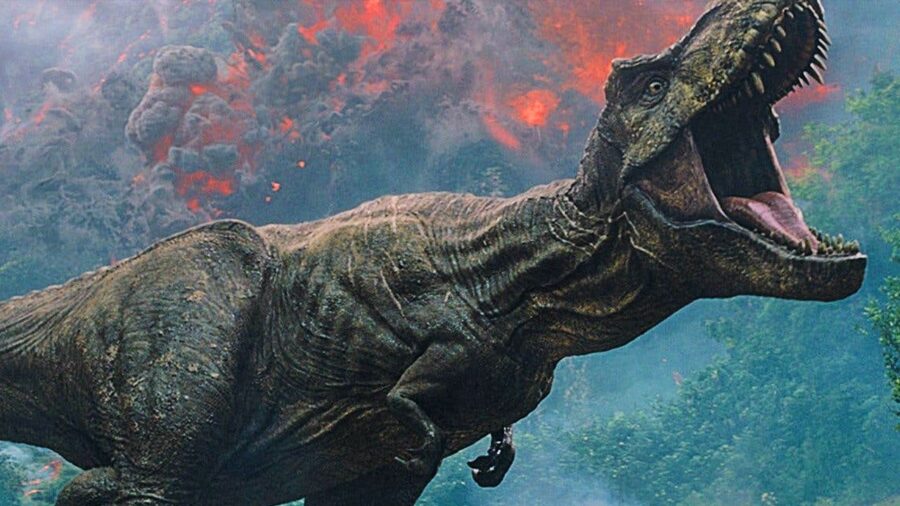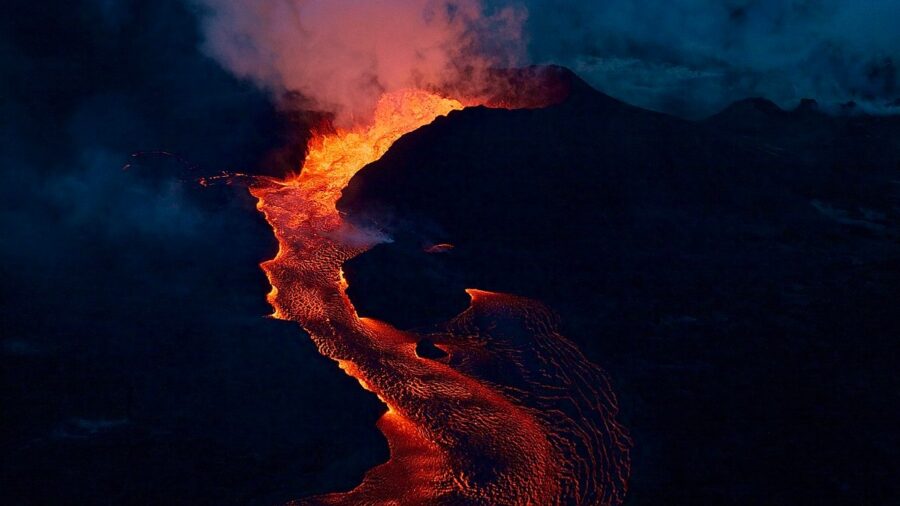Scientists Discover New Theory About What Killed The Dinosaurs

The demise of the dinosaurs has been one of the biggest mysteries in the world of paleontology and geology. Whether a massive asteroid strike or volcanic eruptions led to their extinction has been debated for decades. Now, a new study is shedding light on this age-old question, using the power of computer analysis to uncover a compelling theory.
A new study using a revolutionary new form of analysis concludes it was volcanic eruptions, as opposed to an asteroid strike, that triggered the extinction of the dinosaurs.
Published in the September 29 issue of Science, the dinosaurs study takes a unique approach by minimizing human subjectivity. “Rather than come at it from the perspective of ‘let’s blame the volcanoes and explain why’ or ‘let’s blame asteroids and explain why,’ our goal was to have as little human input or bias in the process as possible,” Dartmouth computational geologist Alexander Cox said via Science News.
The prevailing theories surrounding the extinction of dinosaurs have often centered on the asteroid strike that created the Chicxulub crater in present-day Mexico or the prolonged volcanic eruptions known as the Deccan Traps in Western India. To unravel this ancient mystery, Cox and Dartmouth geologist C. Brenhin Keller used a statistical model called a Markov chain Monte Carlo approach.
This sophisticated model systematically assessed the likelihood of various scenarios related to gas emissions from the asteroid strike and the Deccan Traps eruptions. By comparing the results of simulations with geological observations, they were able to draw conclusions about the dinosaurs’ fate with a high degree of confidence.
Clay Tabor, a paleoclimatologist at the University of Connecticut, suggests that the Chicxulub impact may have unleashed other devastating effects beyond gas emissions…
The key evidence supporting the Deccan Traps eruptions as the primary culprit comes from deep-ocean sediments. Cores drilled into these sediments contain crucial data indicating significant bursts of gases, including planet-warming carbon dioxide and ocean-acidifying sulfur dioxide. Previous dinosaurs’ extinction research focused on timing and lava emplacement during the Deccan Traps eruptions.
However, the new dinosaurs’ extinction study shifted the focus to gas emissions. The computer simulations found that the massive bursts of gas released during the Deccan Traps eruptions were enough to explain the changes in temperature and carbon cycling during the extinction event. In contrast, the asteroid impact did not produce a substantial carbon dioxide or sulfur dioxide spike.

What makes the new dinosaurs’ extinction research particularly noteworthy is the use of parallel computing, involving 128 different processors running simulations at once. This technological leap drastically reduced the time required for computations, making it possible to arrive at conclusions in just a few days instead of a year.
However, some scientists believe that the computer simulation does not offer the definitive answer to the dinosaurs’ extinction mystery. Sierra Petersen, a geochemist at the University of Michigan, says that foraminifera shells used to infer past temperatures may not be an ideal proxy due to their sensitivity to seawater composition, as different temperatures could lead to alternative interpretations of gas release.
“Rather than come at it from the perspective of ‘let’s blame the volcanoes and explain why’ or ‘let’s blame asteroids and explain why,’ our goal was to have as little human input or bias in the process as possible.”
-Alexander Cox, Dartmouth computational geologist
Clay Tabor, a paleoclimatologist at the University of Connecticut, suggests that the Chicxulub impact may have unleashed other devastating effects beyond gas emissions, including massive clouds of soot and dust that could have dimmed sunlight, inducing a frigid winter that swiftly disrupted ecosystems and killed off plants and dinosaurs.
While the latest research into dinosaur extinction presents a compelling argument for the Deccan Traps eruptions as the primary cause, it is unlikely to close the chapter on this long-standing scientific mystery. Future discoveries may refine our understanding of what led to the end of the dinosaurs’ reign on Earth 66 million years ago.












